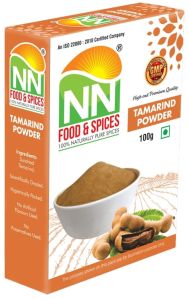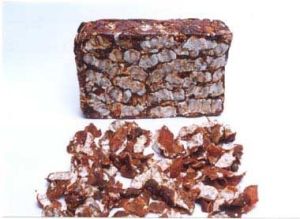
Khajur Imli Chutney
30 Per Packet
300 Packet (MOQ)

Green Tamarind
Get Price Quote
Best Deals from Imli

Tamrind Powder
Get Price Quote
10 Ton (MOQ)

Fresh Tamarind
Get Price Quote
1200 Kilogram (MOQ)

Tamarind Powder
80 - 120 Per Kilogram
10 Ton (MOQ)

Dried Tamarind
Get Price Quote
100 Kilogram (MOQ)

Dried Tamarind
Get Price Quote
10 Ton (MOQ)

White Tamarind Kernel Powder
Get Price Quote
With the years of expertise that we hold, we have established ourselves as one of the major players in the industry. We as Manufacturer, Supplier and Exporter offer White Tamarind Kernel Powder guaranteeing 100% purity and excellent quality. Its accurate formulation eliminates any probability of any impurities to sneak in. The White Tamarind Kernel Powder, we deal in is specially packed in food-grade materials to maintain freshness and extend its shelf life.

Tamarind Powder
Get Price Quote
Dry red onion powder is the ground form of dehydrated red onion. It is an excellent replacement for fresh red onion. Toss it into spice rubs and spice blends, dressings, dips, marinades, frying batter mixes, sauces, soups, stews, salads, sautés, curries etc and making your cooking experience easy and fun. This dry red onion powder is ready to use and tastes as fresh red onion.Ingredients - Made from finest quality dehydrated red onionsCertification - FSSAI (Food Safety and Standards Authority of India)Direction to use- Substitute 1 tsp dry red onion powder per small red onion or 1/3rd cup of chopped red onions.- Add dry red onion powder during the final 15 minutes of cooking, even if the recipe calls for onion powder to be included earlier on.Shelf life - Best before 18 months from manufacturing date.How to use Zilli's (formerly Kitchen D'lite) Powders?- Sprinkle onto salads, eggs, roasted vegetables, pasta and risotto.- Blend into sauces, green juices and smoothies.- Stir into soups, dips, sauces, casseroles and stews.- Bake into breads, biscuits and vegetables.- Shake into vegetable juices and salad dressings.

Fresh Tamarind
30 - 40 Per Kilogram
100 Metric Ton (MOQ)

Raw Tamarind Pickle
Get Price Quote
We are offering raw tamarind pickle. Nishha foods is the food products arm of nishha innovations. we hereby present another food product from the house of nishha foods. Nishha foods is an initiative to empower rural women belonging to self-help groups to have financial stability, and to take their tempting tastes to other parts in india and the world. Nishha foods have more than 90 types of food products. The range includes tasty traditional pickles, chutneys, snacks, powders, sweets, papads and vadiyalu. Nishha's raw tamarind pickle is prepared with 100% organic ingredients procured directly from the farmers who produce the material without using any chemicals or pesticides. Also the preparation is done by women belonging to self-help groups who have the experience and expertise to prepare tasty foods. The taste that you can get in our raw tamarind pickle is a taste that you can relish for sometime and your tastebuds will keep asking for more. This pickle has a shelf life one year, we give a 1 year guarantee for our food products which noone else in the industry can give. Experience the tempting treat for your taste buds.

Tamarind Pods
50 Per Kilogram

Dried Tamarind
Get Price Quote

Tamarind Pods
Get Price Quote

Natural Tamarind Pods
Get Price Quote
3000 Metric Ton (MOQ)

Fresh Tamarind
Get Price Quote

Tamarind
Get Price Quote
We are offering tamarind with seed and seedle.

Tamarind Seed Kernel Powder
Get Price Quote
With our brilliant logistics network, we are capable to deliver the orders within the postulated time frame. Our prime interest is to deliver a flawless range of products to the buyers. And in this concern, we make all arrangements in order to store the entire lot under safe environment. Our Tamarind Seed Kernel Powder is available in a pack of 100 g and more.

Fresh Tamarind
70 - 90 Per Kilogram
5 Ton (MOQ)
description : tamarind (tamarindus indica) is a leguminous tree bearing edible fruit that is indigenous to tropical africa. The genus tamarindus is monotypic, meaning that it contains only this species. the tamarind tree produces brown, pod-like fruits that contain a sweet, tangy pulp, which is used in cuisines around the world. The pulp is also used in traditional medicine and as a metal polish. The tree's wood can be used for woodworking and tamarind seed oil can be extracted from the seeds. Tamarind's tender young leaves are used in indian cuisine. Because tamarind has multiple uses, it is cultivated around the world in tropical and subtropical zones. the tamarind is a long-lived, medium-growth tree, which attains a maximum crown height of 12 to 18 metres (39 to 59 ft). The crown has an irregular, vase-shaped outline of dense foliage. The tree grows well in full sun. It prefers clay, loam, sandy, and acidic soil types, with a high resistance to drought and aerosol salt (wind-borne salt as found in coastal areas). the evergreen leaves are alternately arranged and pinnately lobed. The leaflets are bright green, elliptic-ovular, pinnately veined, and less than 5 cm (2.0 in) in length. The branches droop from a single, central trunk as the tree matures, and are often pruned in agriculture to optimize tree density and ease of fruit harvest. At night, the leaflets close up. as a tropical species, it is frost-sensitive. The pinnate leaves with opposite leaflets give a billowing effect in the wind. Tamarind timber consists of hard, dark red heartwood and softer, yellowish sapwood. soil and climategrown on variety of soils ranging from poor degraded, eroded, gravelly, saline and alkaline soils. Productivity is higher in red loamy, deep well drained soils. The absolute maximum temperature varies from 36-47.50 c and the absolute minimum temperature varies from 0-17.50 c. Rainfall requirement – 750-1900 mm. Altitude – up to 100 m above msl.propagationseeds / graftsnursery: fresh seeds are sown in nursery beds in march – april. Soaking of seeds in 10 per cent cow urine or in cow dung solution (500 g in 10 l of water) for 24 hours. Two year old seedlings are transplanted to the main field.vegetative propagation softwood grafting: march- april air layering: shoots treated with iba 4000 ppm. spacing8-10m x 8-10m is adopted.plantingthe grafts should be planted in the pits of 1 m x 1 m x 1 m filled with fym and top soil. add 50 g of methyl parathion 1.3% dust in the pit. Immediately after planting, support the graft with stakes.varieties : pkm 1 urigam hasanur, tumkur prathisthan, dts 1, yogeshwari. management :trainingearly training is necessary to form a high head and uniform scaffold branches in all directions.pruningremoval of dried, diseased and criss cross branches.plant protection pests leaf caterpillar (achaea janata) leaf caterpillar can be controlled by spraying quinalphos 25 ec 2 ml/lit or monocrotophos 36 wsc 2 ml/lit. irrigation :regular watering should be given once in seven days.fertilizersapply 200:150:250 g of npk per tree per year along with 25 kg of fym and 2 kg of neem cake.aftercultivation remove the rootstock sprouts. remove the dried and diseased parts. intercrops like leguminous crops, short duration vegetables, annual drumstick, sesamum and sorghum

Raw Tamarind Pickle
300 - 650 Per Kilogram
5 Kilogram (MOQ)
Prices are Ex-works